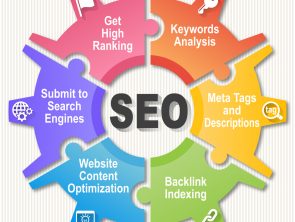SEARCH ENGINE OPTIMIZATION (SEO)

Introduction to Search Engine Optimization (SEO)
Search engine optimization (SEO) is the process of analyzing your site and modifying it to enable search engines to read it, understand it and index (or catalog) it correctly. This is not rewriting the site or changing the look and feel. It is subtle changes, adding or modifying inconspicuous visible and invisible text so that the search engines can read the site. SEO is not ‘spamming’ the search engines – it is simply helping the search engines help you.
The need for SEO has become acute in the past few years. Web sites are being created with Java, Flash and images all of which search engines can not understand and ignore. If the content of your website is ignored by the search engines then they can’t index your site, if your site isn’t indexed then no one will find your site by searching for it in Google, Yahoo, MSN, etc. If no one can find your site then your hard work and money spent creating the site is in vain.
Search engines don’t like this either, they want to provide the best possible results to visitors and if they can’t index a website for any reason they may be missing great content that searchers are looking for. In fact SEO is so important, Google provides guidelines for choosing a SEO service.
SEO Principle
Make a site with a clear hierarchy and text links. Every page should be reachable from at least one static text link.
Offer a site map to your users with links that point to the important parts of your site. If the site map is larger than 100 or so links, you may want to break the site map into separate pages.
Create a useful, information-rich site, and write pages that clearly and accurately describe your content.
Think about the words users would type to find your pages, and make sure that your site actually includes those words within it.
Try to use text instead of images to display important names, content, or links. The Google crawler doesn’t recognize text contained in images.
Make sure that your TITLE tags and ALT attributes are descriptive and accurate.
Check for broken links and correct HTML.
If you decide to use dynamic pages (i.e., the URL contains a “?” character), be aware that not every search engine spider crawls dynamic pages as well as static pages. It helps to keep the parameters short and the number of them few.
Keep the links on a given page to a reasonable number (fewer than 100).
Contact Us
Testimonials

I worked with Tangelo Digital Media on getting my new website designed, built and optimized. In our first meeting, he took the time to understand all of my needs and really went in depth through all my requirements. There was a bunch of factors I hadn’t even thought of until Gary brought it up! He…
